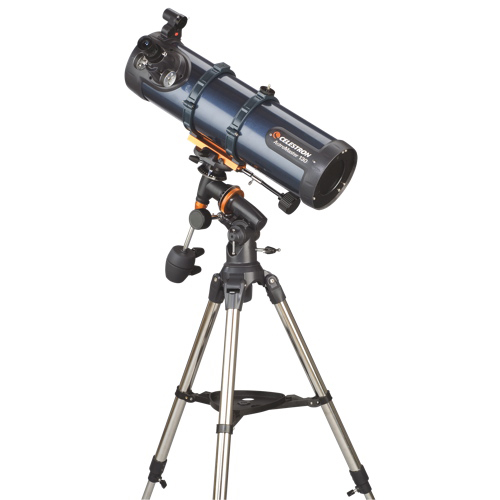 If you didn’t know that Best Buy sells telescopes, you’ve come to the right place to receive some vital information about these amazing tools, along with a few fun suggestions on telescope types.
If you didn’t know that Best Buy sells telescopes, you’ve come to the right place to receive some vital information about these amazing tools, along with a few fun suggestions on telescope types.
One thing you’ll need to know right away is that there are many different types of telescopes, and each has its own special purpose, as well as certain strengths and weaknesses. Many people don’t realize this if they’ve never purchased a telescope before.
Among the major classifications of telescope are optical telescopes, radio telescopes, infrared telescopes, and X-ray telescopes—just to name but a few. Luckily all you need to concern yourself with here are optical telescopes, but even optical telescopes come in a variety of sub-types that you should really try to understand before making a purchase.
Types of Optical Telescopes:
Refracting Telescopes – Simply put, refracting telescopes (also called refractors or dioptic telescopes) were the first telescopes ever produced (they’ve now existed for centuries), and they’re also the most basic. These telescopes use a simple glass lens system to gather, bend, and focus light for the user, thus magnifying the object being viewed. However, they’re highly susceptible to light aberrations in the atmosphere that make objects appear to be moving. This unfortunately blurs the image you’re viewing (i.e., it’s what makes stars appear to twinkle) and makes Astronomy from Earth’s surface somewhat more difficult.
Mounting these in space solves this problem, but that may not be ideal for you! Refracting telescopes use a large objective lens that is capable of gathering more light than the human eye can gather, which is then magnified by the rounded shape of the lens and focused for your eye. This is the same principle by which binoculars work. This type of telescope has largely been abandoned by professional Astronomers today (except when mounted in space). There are numerous sub-types of refracting telescopes as well.
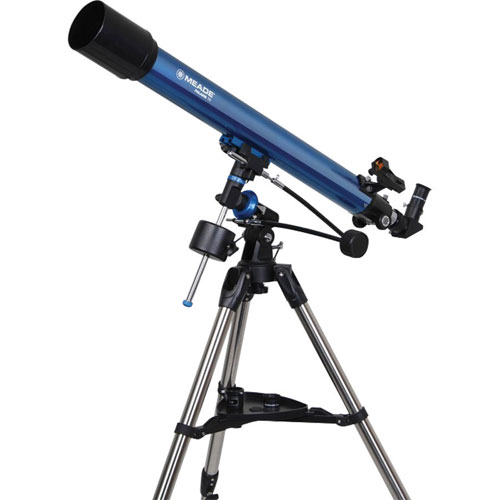
Reflecting Telescopes – Reflecting telescopes employ one or more curved mirrors to gather, reflect, and focus significantly more light than the human eye can gather. These telescopes are also capable of gathering considerably more light than refracting telescopes due to their ability to accommodate large diameter objectives (i.e., they can more easily house large surface lenses).
But these telescopes too can have their difficulties. Chromatic aberrations, for instance, cause reflecting telescopes to have difficulty focusing all of the colours within a given light source at a single point of convergence. In other words, some stuff looks blurry & the colours may be misaligned.
Once again, mounting in space is optimal, but even so, these telescopes represent a significant improvement over refracting telescopes even right here on the Earth’s surface. Invented by Isaac Newton in the 17th century, reflecting telescopes are widely used in professional Astronomy even today. They generally become more and more effective (and more and more expensive) with increased mirror size and quantity. There are many further sub-types of reflecting telescopes as well.
Catadioptric Telescopes – This type of optical telescope combines the 2 above types to form a telescope that is highly effective at gathering light while also attempting (insofar is it is possible) to reduce the effects of various types of light aberrations. There are also many different sub-types of these telescopes, and they’re generally more compact than the other varieties as well (i.e., they’re shorter).
This makes them easier to transport than many other telescopes. However, there don’t seem to be as many of these telescopes available for hobby use as the other 2 types. Even so, Best Buy does have one or two catadioptric telescopes available, so I’ll include one example of each of the 3 main types of optical telescopes below.
A Few Telescope Suggestions
If you’re a beginning, amateur Astronomer, you may not want to get too fancy the first time out, and the Bushnell Deep Space 60 x 660mm Telescope is a fun and effective model within this realm. This basic refracting telescope is great for viewing the night sky and for looking at far away objects on land. It’s main features include a 60mm aperture, 660mm of focal length, an adjustable (& aluminum) tripod, 2 Barlow lenses, 3 interchangeable eyepieces (@ 1.25 inches each), a diagonal prism, a Moon filter, and a solar projection screen—among others!
Be sure to read all of the specs on the Best Buy product page before making your decision, and, if you’re not a telescope expert, I highly suggest taking the time to further educate yourself as to the implications of buying a light refracting telescope. Make sure you understand all of the specialized lingo and determine if this (or another) telescope will meet your Astronomy needs.
Another fine example is the Celestron AstroMaster 130EQ 130 x 650mm Telescope. This beautiful telescope belongs to a branch of reflectors known as Newtonian Reflecting Telescopes, and this particular model is ideal for viewing some of the most interesting celestial bodies in our solar system, from the many craters of our Moon to the stunning rings of Saturn.
Featuring a 130mm aperture and 650mm of focal length, you’ll get up to 65 times magnification with this unit, and it even includes TheSkyX Astronomy software to help you navigate the universe! Complete with user manual and aluminum Tripod (which includes a built-in accessory tray), this scope is great for Astronomy enthusiasts at the beginning level, as well as those who are more advanced.
Once again, however, always do your research first to be fully aware of what you’re buying. It may just be the case that you’re looking for something that can see even further and clearer than this model can.
Take, for instance, the 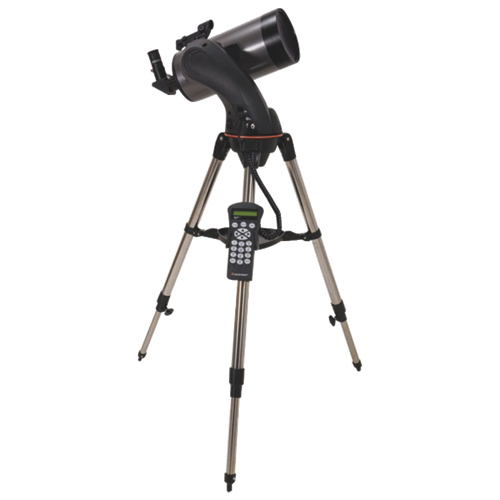 Celestron Nexstar 127SLT 127 x 1500mm Computerized Maksutov-Cassegrain Telescope. This model has a number of high-end features such as its Maksutov-Cassegrain design with 127mm aperture.
Celestron Nexstar 127SLT 127 x 1500mm Computerized Maksutov-Cassegrain Telescope. This model has a number of high-end features such as its Maksutov-Cassegrain design with 127mm aperture.
This is a catadioptric telescope design featuring multiple mirrors, including a small, secondary, convex mirror mounted near the focus of the primary mirror. This telescope also features a 1500mm focal length, and TheSkyX software (First Light Edition) with a database of 10,000 celestial objects & printable sky maps. There’s even special software that allows you to control your telescope via your computer, and that isn’t even the half of it!
But be sure to read Best Buy’s product page for full specs and details so you don’t miss out on any important details, such as its stainless steel tripod with attached accessory tray—or something even more vital! It’s very important to understand exactly what you’re getting with a complex telescope like this, otherwise you may end up with something that’s overwhelming to use. But as long as you’re willing to learn, you can get a great deal of satisfaction out of this model!
If you fancy yourself an Astronomer—whether amateur or professional, real or imagined, check out Best Buy’s complete selection of Telescopes. Just be aware that telescopes are complex and varied devices that require a certain amount of study to enjoy to the fullest.
Good luck & happy star gazing!
















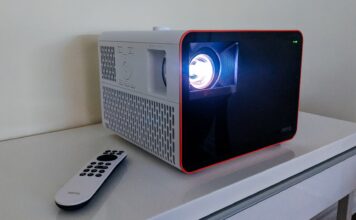
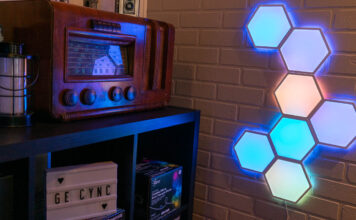


















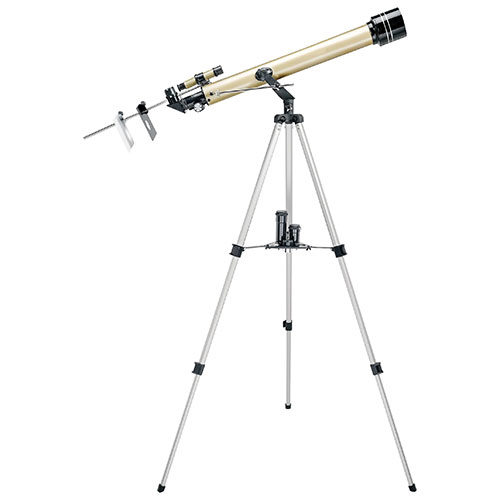
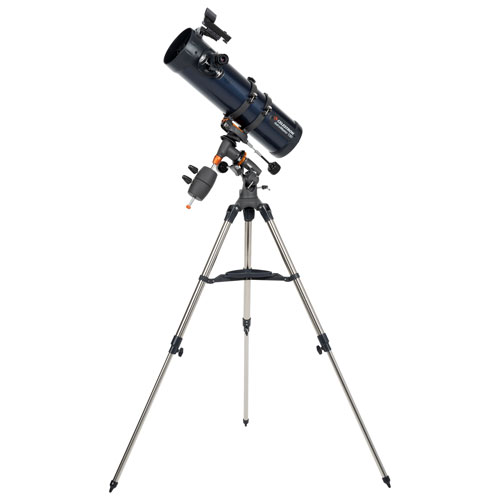




Thoughts…
https://itunes.apple.com/ca/app/planets/id305793334?mt=8
https://play.google.com/store/apps/details?id=org.qcontinuum.planets&hl=en
Any suggestions which telescope model is good for bolting a DSLR to? That is to be used for digiscoping?
That’s a great and complete review @Leo_Bond , the explanations of the various types is great along with their attributes and weak points.
I would also add that when setting up a telescope, the surface must be solid and level. The balcony and patio deck do not work, especially when someone moves. Find a darkest spot that is not affected by ambiant city lights, set up some flat cement blocks, using a level, to make sure they are always flat, especially after rain.
Some great points guys. Thanks! There’s just so much to say about telescopes. It could easily fill a very thick book. Anyone considering getting a telescope should really do a significant amount of research first. It doesn’t guarantee satisfaction, but it gives you a better chance of finding something you’ll enjoy. Unfortunately, in a very short blog article, I could barely scratch the surface of what people need to know. Hopefully it at least gives folks a starting point and helps them to understand that they need to keep researching. I honestly don’t have any suggestions for which scope is best to attach a DSLR to. I’m confdident that Best Buy has some good options for that, but I’m not really an expert. Maybe there are some readers out there that have telescope expertise and could chime in?
LB
Comments are closed.